Background
In America alone, 84 billion servings of tea were consumed in 2019, with 15% of that coming from green tea. Considering America is not the largest tea consumer, this is a staggering statistic that requires a cultural and biological explanation. Green tea, in particular, is advertised to relieve stress and anxiety yet energize the body significantly better than caffeinated drinks alone. A principal constituent of green tea is caffeine. However, another molecule, less well-known, is a major player in the stress relief associated with green tea. The compound is L-theanine or L-γ-glutamyl-ethyl amide, an amino acid analogue of L-glutamine (Gln, Q), found at around 25 mg/cup of green tea. L-theanine is considered safe in all mammalian cell lines and interestingly enough, the L form of theanine has special effects on neurological systems influencing anxiety. First, a brief introduction to what amino acids are and their responsibilities in the body. Secondly, a review of the literature highlighting L-theanine’s mechanism of action, and lastly, a brief discussion on the performance and cognitive benefits of L-theanine as seen through research.
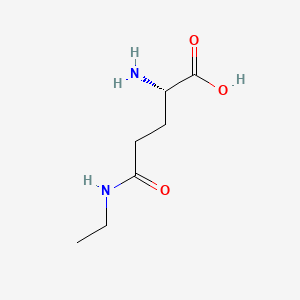
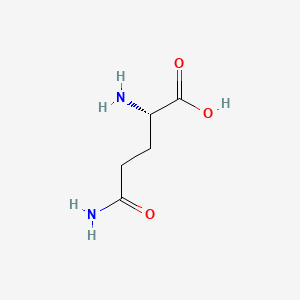
Amino Acids
Amino acids are organic molecules containing a carboxyl and amino group. These small molecules are the building blocks of proteins. When two amino acids come together, a peptide bond is formed, thus forming a dipeptide. More amino acids can be added to this, and biologically this is completed from mRNA, tRNA, and ribosomes. Furthermore, peptides fold into alpha helices, beta-pleated sheets, and loops to form a protein’s secondary structure. These structures also have further interactions like hydrogen-hydrogen interactions, ionic bonds, and disulfide bonds courtesy of cysteine-cysteine bonding. However, even single amino acids are extremely important for cell signaling. For example, glutamate is an extremely important neurotransmitter, while leucine is a potent activator of mammalian target of rapamycin (mTOR). Altogether, amino acids can be building blocks for a larger protein, signaling molecules, and have other roles in nutrient sensing.
There are twenty essential amino acids, which are required to be taken in from the diet. However, not all amino acids are labeled as essential. Some amino acids like theanine are labeled non-proteinogenic amino acids, simply due to the fact that it is not used to build proteins but rather as signaling molecule. These kinds of amino acids can bind to or interact with receptors and other proteins to elicit a response or block a response from occurring.

Mechanism of Action
L-theanine is of special interest when it comes to productivity and stress relief particularly due to its impact on neurotransmission. For a drug to have any impact on psychological feelings or mood via the brain, it must be able to cross the blood-brain barrier and bind to specific receptors. An important characteristic of L-theanine administration is that brain levels start to rise, at the latest, 1-hour post-administration and brain levels don’t drop until 5-hours post-administration. This long time of action in the brain makes it a useful compound for administering prior to mental tasks.
L-theanine exerts its effect via antagonizing the glutamate receptor subtypes: AMPA receptor, kainate receptor, and NDMA receptor. Although studies report that L-theanine has a much lower affinity (80-fold less) than L-glutamic acid for the AMPA receptor, it seems it still exerts its effect through these glutamate receptor subtypes.
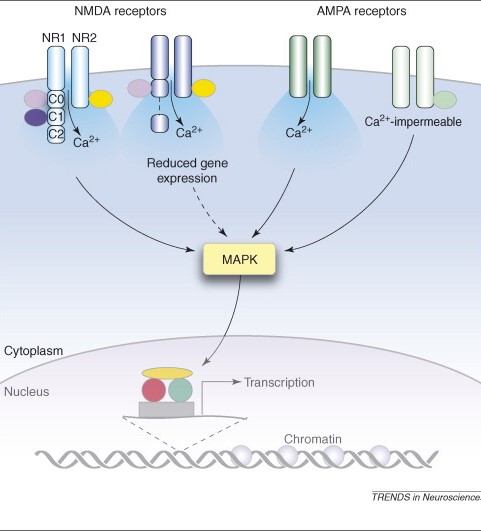
Glutamate is the primary excitatory neurotransmitter, thus by blocking the binding of glutamate to its receptors, L-theanine acts to decrease excitatory signaling. This occurs primarily in cortical neurons and this is the reason why L-theanine reduces anxiety. L-theanine has also been found to increase striatal dopamine and inhibit some aspects of norepinephrine signaling.
In this manner, L-theanine acts to block cyclic AMP (cAMP) formation which significantly decreases the impact norepinephrine has on stress and anxiety. L-theanine also seems to play an important role in altering the serotoninergic system, such that oral L-theanine increases serotonin concentrations in the hippocampus, striatum, and hypothalamus.
L-theanine is also quite commonly consumed prior to sleep due to its impact on gamma-aminobutyric acid (GABA) concentrations. Administration of 200-400 mg results in an increase in GABA concentrations thus resulting in higher-quality sleep. Lastly, the administration of L-theanine seems to be neuroprotective by preventing excess glutamate signaling or excitotoxicity. While some actions of L-theanine are still relatively unknown, it has many actions throughout the brain that impact several different signaling pathways. Based on the multifaceted mechanisms this compound is a promising supplement for boosting cognition and reducing stress and anxiety.
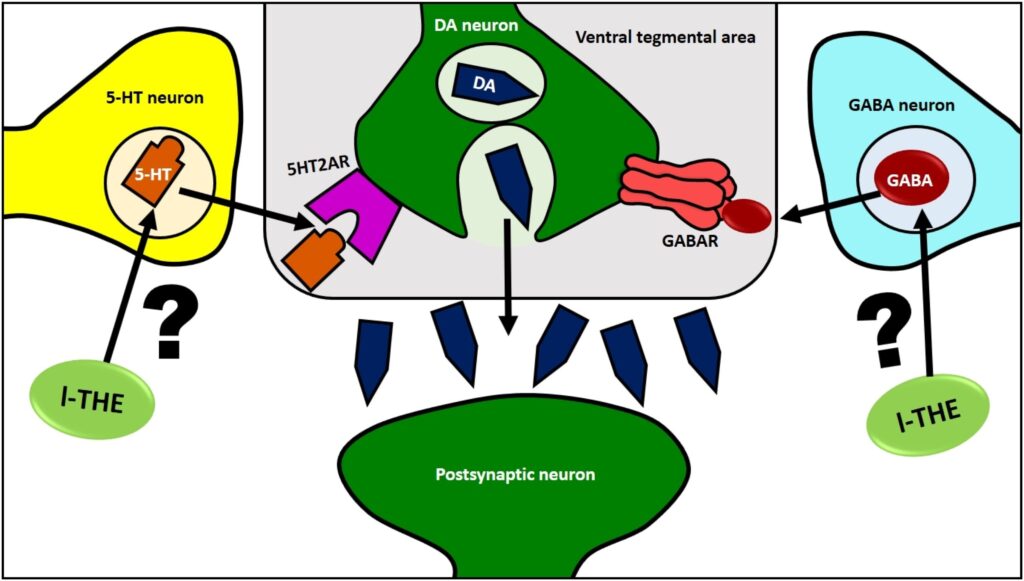
Benefits of L-theanine Supplementation
L-theanine is considered an anti-stress molecule, likely because it increases GABA, decreases excitatory glutamate neurotransmission, and reduces the impact of norepinephrine. A paper investigating psychological and physiological stress gave l-theanine to subjects and measured variation in heart rate. It was demonstrated that l-theanine reduced heart rate and variation of heart rate when compared to baseline and placebo measurements. This paper concluded that l-theanine is most likely decreasing sympathetic nervous system activity, or in other words, decreasing the impact of epinephrine and norepinephrine in the stress response. Another study using 20 healthy college students investigated the impact of l-theanine on subjective stress.
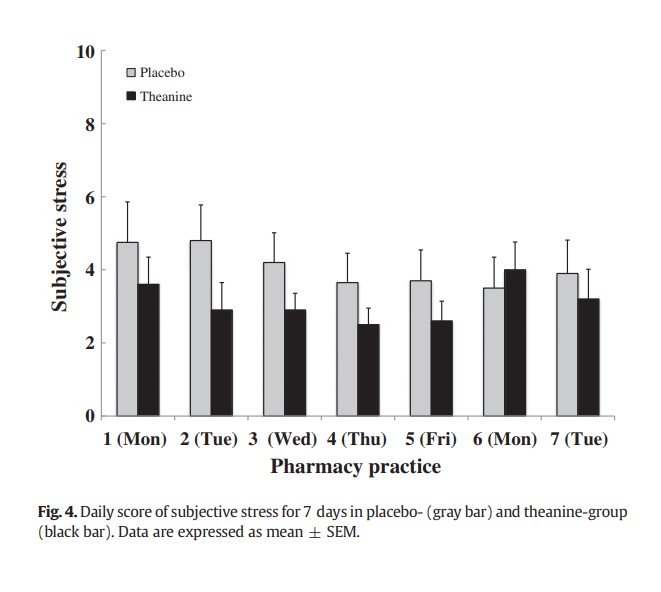
This study found that a dose of 200 mg/day of L-theanine was able to decrease subjective stress scores. The importance of this study resides in the fact that these subjects were labeled as healthy college adults, and a non-toxic, over-the-counter supplement was able to decrease stress is incredible. For further context, other supplements that claim to reduce
stress oftentimes only reduce stress in subjects prone to stress and anxiety. Another study used 34 healthy subjects, administered an L-theanine drink, and assessed stress levels over time. The study found that the l-theanine group (active) was significantly less stressed 1-hour post-consumption, but not 3-hours post-consumption.
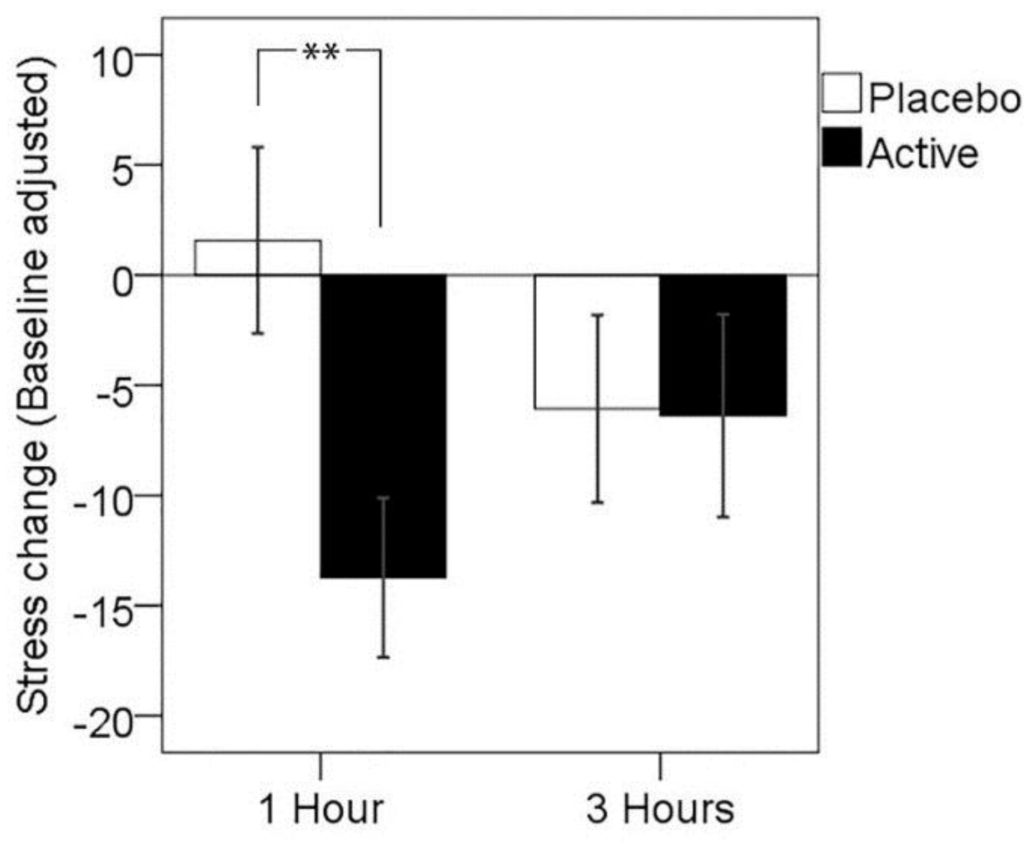
There are also studies that use chronic restraint stress (CRS) to impair cognition in mice. This CRS-induced cognitive impairment results in abnormal corticosterone, the primary corticosteroid produced from the adrenal gland in rodents (cortisol in mammals), abnormal catecholamine levels in the brain, and other performance issues. A study performed in 2013 found that the administration of l-theanine alleviated this cognitive impairment.
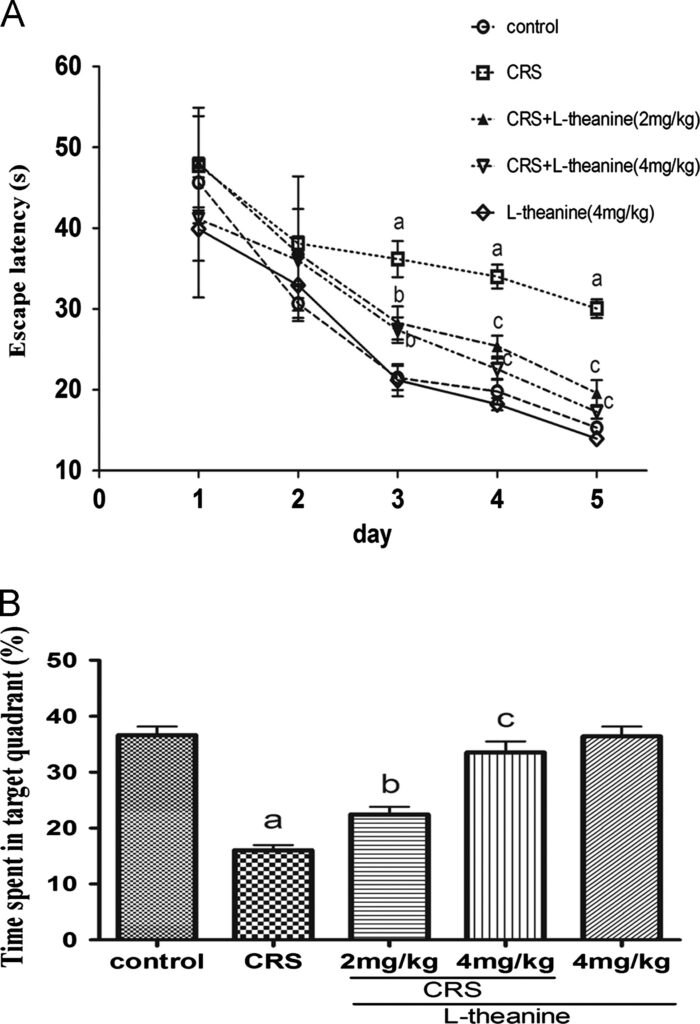
In figure A, it was found that CRS mice not treated with l-theanine performed significantly worse in the morris water maze test. However, when treated with l-theanine at 2-4 mg/kg, the performance was not significantly different than normal healthy mice. Figure B demonstrated that mice treated with 4 mg/kg performed equally as well as normal healthy mice and significantly better than CRS mice and mice treated with l-theanine at 2 mg/kg. Overall, the main takeaway from these studies is that l-theanine treatment totally alleviated the cognitive impairment resulting from CRS.
L-theanine is a multifaceted compound, meaning its administration can potentially assist in a variety of diseases including Alzheimer’s disease (AD). A study published in 2018 investigated the impact of l-theanine on AD and the mechanism by which memory could be alleviated.
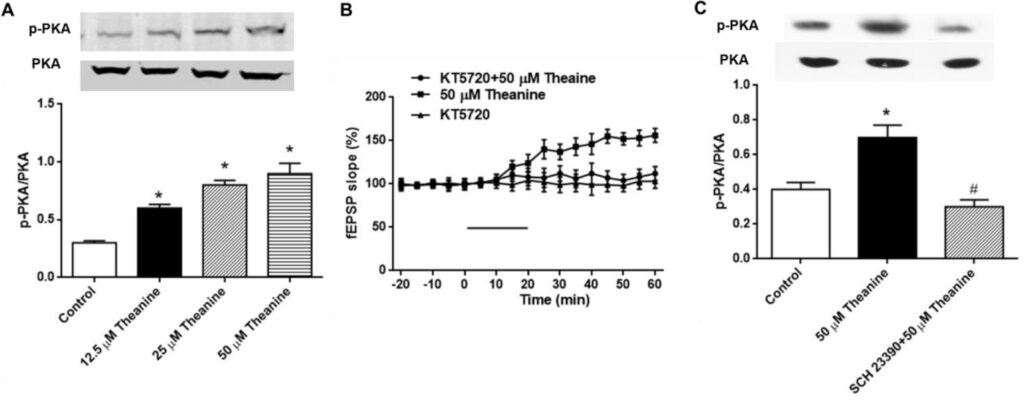
The first objective was to determine an action by which l-theanine may impact hippocampal memory systems, in which the authors found that treatment of l-theanine significantly raised phosphorylated PKA levels. To further confirm this, the researchers incubated the cells with SCH 23390, a D1 dopamine receptor antagonist, which confirmed that theanine acts through the D1 receptor to increase PKA phosphorylation.
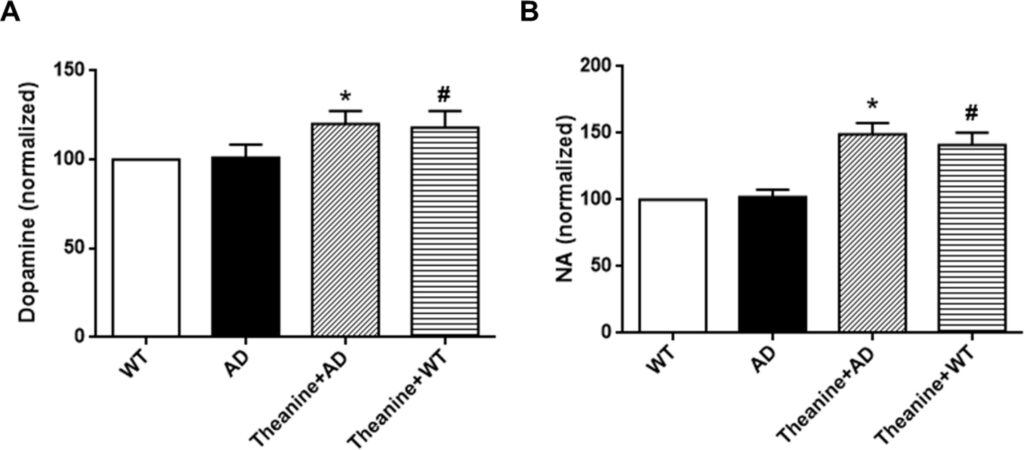
The next set of experiments were aimed at discussing the impact of l-theanine on norepinephrine (NA) and dopamine levels in the hippocampus. The results indicate that l-theanine treatment raised both NA and dopamine levels in healthy mice and mice with AD. Altogether, the researchers concluded that l-theanine acts to promote hippocampal synaptic transmission and memory through the D1/PKA pathway, increase dopamine release, and increase NA release in the hippocampus.
A more recent 2022 study found that l-theanine was able to alter the gut microbiota, thus impacting lipid metabolism in a positive manner. It was found that through l-theanine administration, Lactobacillus, Streptococcus, Bacteroides, Clostridium, and Enterorhabdus were decreased and serum triglycerides and cholesterol were significantly decreased as a result.
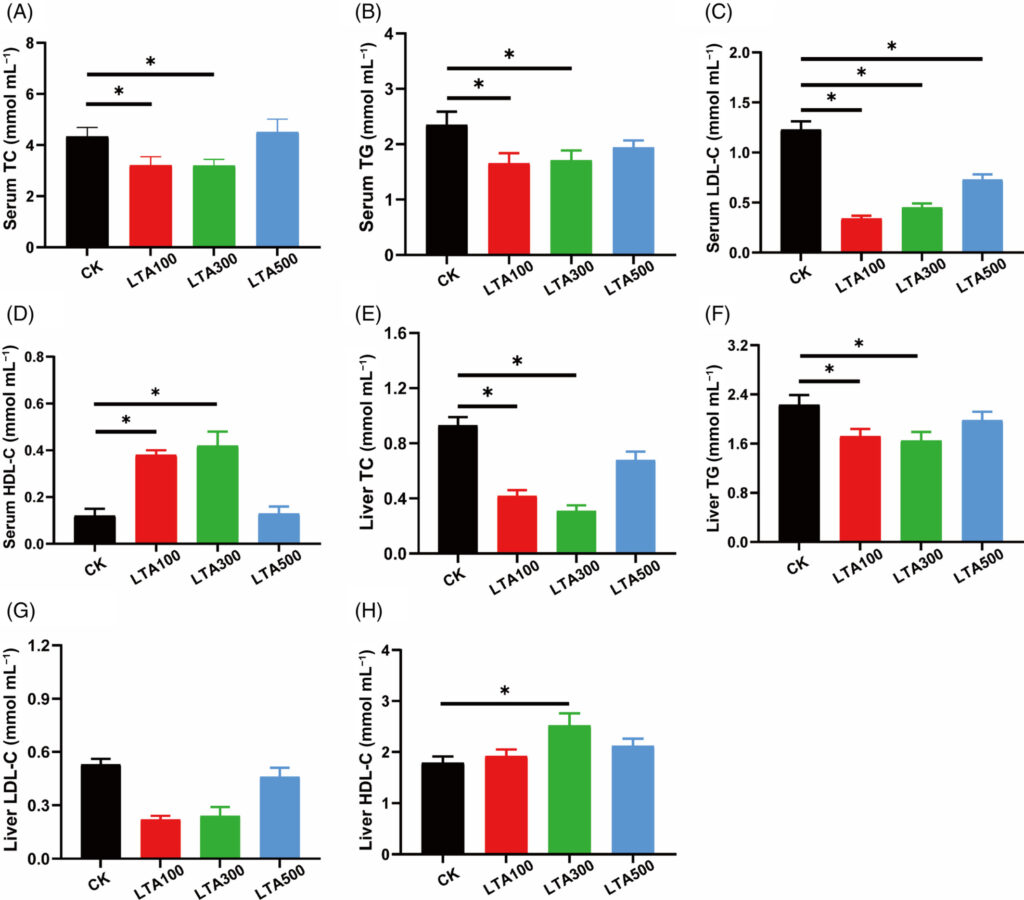
The results indicated above suggest that l-theanine at 100-300 mg/kg significantly reduces serum total cholesterol (A), triglycerides (B), LDL-cholesterol (C), liver total cholesterol (E), and liver triglycerides (F). It was also found that serum and liver HDL-cholesterol were significantly increased compared to the control. These results indicate that l-theanine has a positive influence on lipid profiles in mice and this warrants future studies.
While l-theanine has antioxidant properties, metabolic regulatory properties, and other benefits, it is mostly taken in conjunction with caffeine to improve performance. While an earlier discussion focused on memory improvement after administration of l-theanine, its stress-reducing properties are especially beneficial when taken with caffeine. Since caffeine oftentimes results in jitters and anxiety, co-administration with l-theanine reduces jitters and caffeine-induced anxiety.
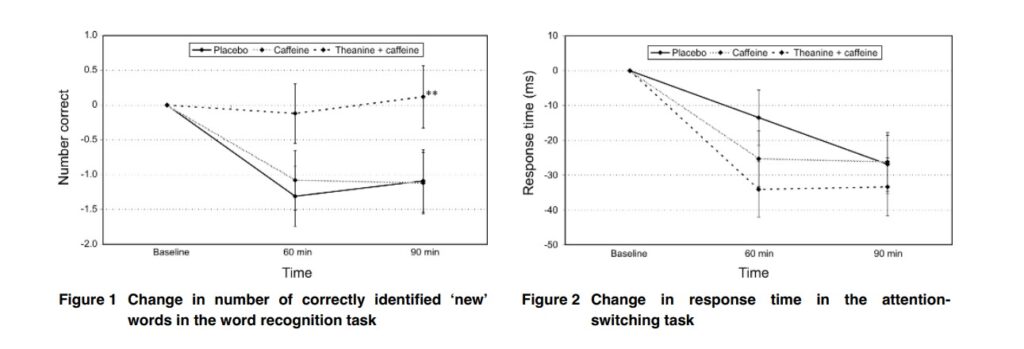
Experiments from a paper found that the theanine + caffeine group performed significantly better in the “new word” experiment. Along with this, the theanine + caffeine group also had significantly reduced response time compared to placebo and caffeine-only groups. Another paper found that subjects given l-theanine plus caffeine had reduced jitters and increased alertness compared to theanine only, caffeine alone, and placebo groups. Another double-blind, placebo-controlled study found that caffeine plus theanine significantly improved attention tasks and overall mood ratings suggesting that this combination is effective for enhancing work productivity.
Theanine for Enhancing Productivity
The findings from the literature as listed above suggest that l-theanine is a useful compound when combined with caffeine. The combination of these compounds provides calm alertness, with the alertness coming from the caffeine, and the calm coming from the l-theanine. A cup of green tea contains around 25 mg, which is a suboptimal amount of l-theanine. Other studies use 50 mg, but the most common dose used is anywhere from 100-500 mg, with doses upwards of grams being taken without any side effects. A dose of 100-200 mg caffeine paired with 200 mg l-theanine is a useful combination when enhancing work productivity.
Another useful compound to pair with l-theanine is theacrine. As described in a previous article (Theacrine Review), theacrine is similar to caffeine, except with a more pronounced impact on neurotransmission and a longer half-life. Since caffeine and theacrine both primarily act on the adenosine receptor, they both increase alertness, thus any stress or anxiety coming from theacrine will be alleviated via l-theanine.
Of course, l-theanine can be used alone to decrease stress. For days not focused on long work hours, l-theanine can be administered alone to decrease stress and allow for caffeine desensitization.